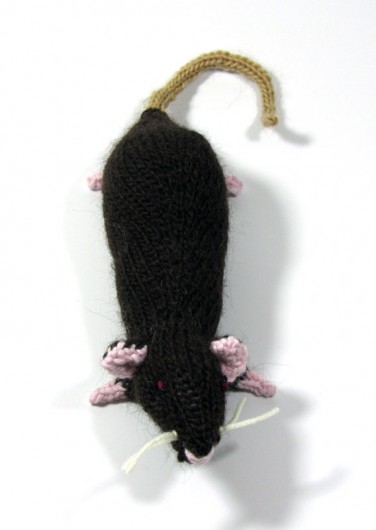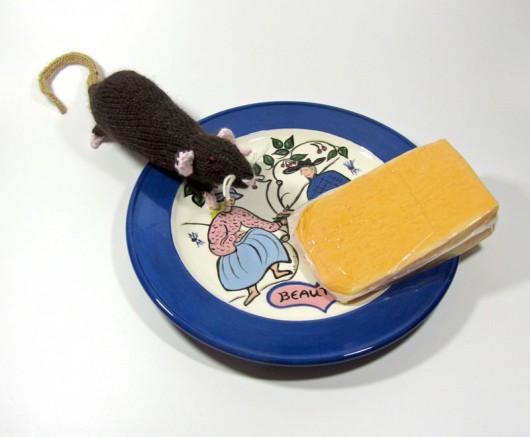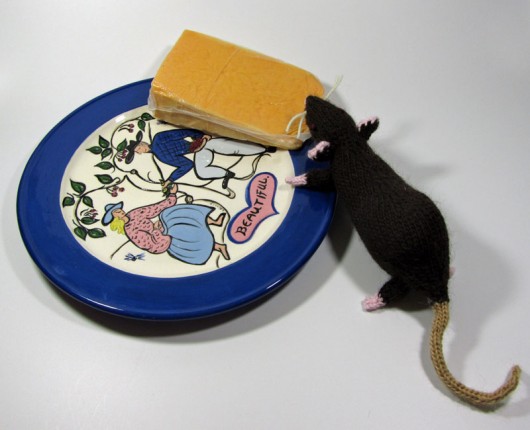I don’t have friendly feelings toward Canada Geese. I’ve written about this a lot on my blog over the years, including my efforts to chase them away with a big floating alligator head with shiny jewel eyes that sparkled in the sun.

That worked not one bit. In fact, a pair of black ducks decided to befriend Headly the first night he appeared at the dock and they soiled the dock big time.
And then there was the plastic coyote.

He had a big fluffy realistic tail that flapped in the wind. We moved him around the lawn thinking maybe we’d keep the geese wondering if he could do more than wave his tail at them. That didn’t work either. And everytime I caught a glimpse of him I startled.
We’ve strung the property (to the extent that we can). I’ve run after them in my white bathrobe yelling and waving a broom in the air. I have permission to go on my neighbors’ lots to chase them away. Nothing, except a dog–which we don’t have, works for longer than a few minutes unless THEY decide they want to graze elsewhere. So, from about June until September we have to deal with geese, their goslings, and–of course (and this is the point)–their slimy toostie roll droppings.
Last summer my grandchildren, then ages 3 and 5, visited for a week. They were quite entertained by the adult efforts to keep the geese at bay. Especially memorable was their mother herding the geese off the neighbor’s lawn screaming like a banshee as the geese fluttered ahead of her.
My daughter-in-law later suggested that the children would enjoy having knitted Canada Geese. They’d taken to calling themselves goslings and to teasing their parents sometimes by calling them Mama and Daddy Goose. Gulp. Knit geese? Knit Canada Geese?
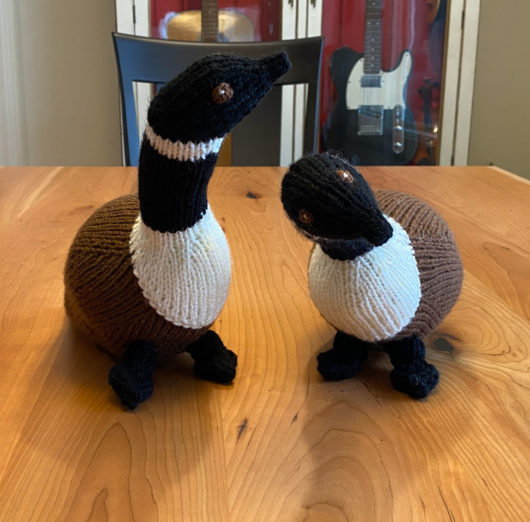
These two made their appearance in time for a Valentine’s Day send-off to the kiddos. They were well-received. The children are totally sweet and totally knitworthy.

This is a pair of Betsy’s Goose, a freebie pattern on Ravelry offered by Sara Elizabeth Kellner. I decided to economize on the yarn and knit the geese in Paintbox Yarn Simply Aran, a 100% acrylic. I was pleasantly surprised with the quality of the yarn. Even knit at tight gauge, the yarn didn’t squeak as I knit. There were no knots. It’s an excellent acrylic in my view. The pattern was an easy knit.
Lots of folks have trouble with the legs. Basically, the geese don’t want to stand on them. Some knitters just leave the legs off. But I didn’t think that geese without legs and feet would suit. I positioned the legs in a few places. I tried them stiffened with a section of plastic straw. I tried running a length of yarn from the leg to an unobtrusive place in the neck to try to strengthen them. None of that worked. On a second try I borrowed feet from a different duck pattern where the feet are larger. That didn’t work either. Finally this is what I did:
I used the black yarn, doubled, and moved up to size 6 US needles rather than the size 4 that I used for the body. I followed rounds 1-4 for the leg, as the pattern directs. But I didn’t knit any rounds of the next one inch the pattern called for. I moved right into the remaining rounds, 1-8–as written. My idea was to double the yarn to make the legs stiffer and to shorten the legs, a lot. I ran a running stitch across the foot, at the base of the stumpy little legs to help flatten the feet a bit. When I fastened these feet to the goose in the place where goose feet ought to be, the goose toppled over–just as with all my other tries. I had to place the feet much further toward the neck than toward the tail before the goose would balance. So, not anatomically correct. But it worked and looks OK.
I wonder what this pair is looking at?
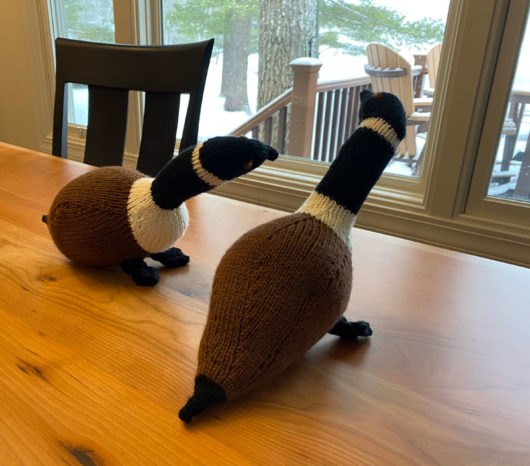
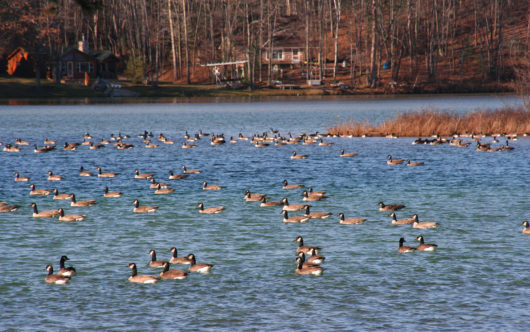
No. Please. No.
Rest easy. This is a photo of a Long Lake Canada Goose attack during the southern migration when, for reasons unknown (to me), the geese only rarely come ashore. At this time of the year, and through the summer, we tend to have “only” 4-5 geese pair on the lake. Oh, and each pair has between 3 and a dozen goslings that survive to what passes for maturity among these critters.
Ending on a more hopeful note, but still sticking to the theme, this is the Flying Geese Hat by Streelymade Designs.

I knit mine in Mirasol Umina. It’s 50% alpaca, 50% merino and lists on Ravelry as an Aran weight. I see it more as a worsted, though.
Good hat. Nice simple crown decrease.

Canada Geese. Beautiful birds. I just wish we weren’t up to our eyeballs in them.




















